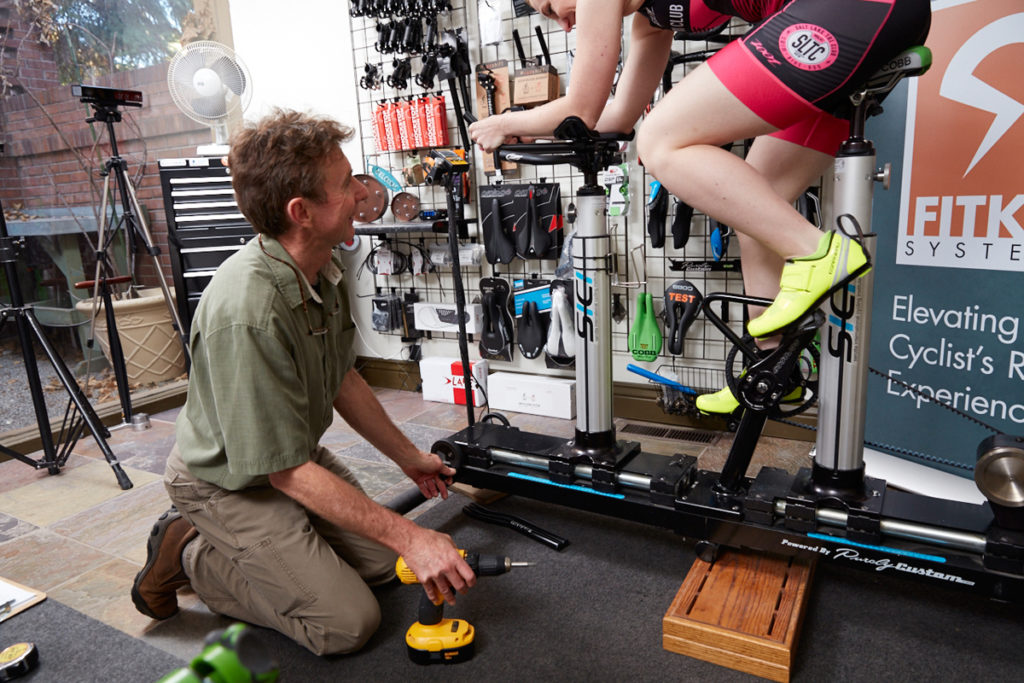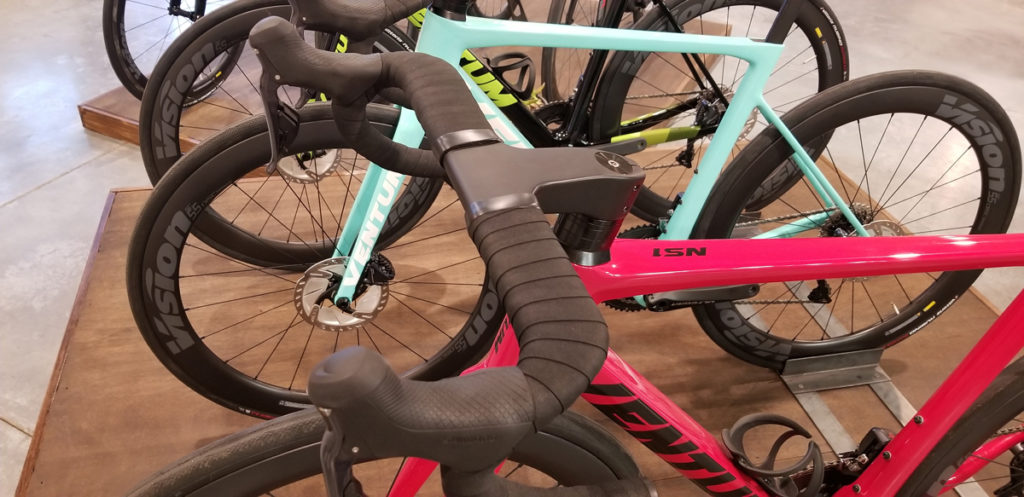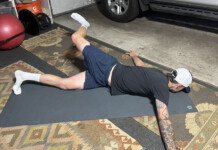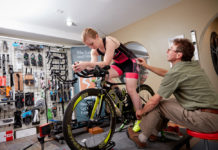I know you are smart enough to be mindful of choosing a bike the right size when shopping for a new steed, whether you are buying a “screaming deal” used bike, or a new dream bike. But there are some bikes where knowing the right size is not quite enough to guarantee the bike will be a good fit for you. You need more than a frame size. You need a prescription for selecting not only the model and frame size, but also components like the handlebars (width, drop, and reach), stem (length and rise) and cranks (length) for example.

Sizing deals in generalities, but fitting deals in specifics and a pre-purchase fit helps identify the specifics. Beyond helping choose components, the specifics can also define the saddle-to-handlebar position in space in relation to the frame.
This is more important for some bikes that others. Buying a “regular” bike from a bike shop? No big need for a pre-purchase fit, although it can be helpful. However, in the following situations, going shopping for a bike without a more detailed buying prescription ignores the wisdom of the proverb: “measure twice, cut once.”
- Buying a triathlon “superbike”, with a brand-proprietary front end that can’t be adjusted up / down in or out without hiring, marrying, or becoming your own personal and proficient bike mechanic;
- Buying an “aero” road bike with an integrated handlebar/stem combination
- Buying either of the above through an online, direct to consumer channel.
Why might these bikes present an issue, and warrant a pre-purchase fit?
- Proprietary and/or integrated bar-stem combinations are usually composite (carbon fiber), expensive and not easily swappable like a regular stem and bar due to the internal cable routing. This makes it hard to test out different equipment choices (eg longer stem, shorter stem, narrower bar, wider bar), or different positions (more or less reach and stack to the bars or aero-pads), to find out what works best for you.
- There are limits to both the interchangeability and adjustability of these front-end parts, and your riding position for optimal comfort and performance may not fall within those limits. Meaning you will have dumped a lot of dosh into a bike that is not fun to ride, and may even be painful!
- Aero Road bikes and Triathlon superbikes are more likely to have both the brake and gear cables (or electronic leads) internally routed through handlebars and stem to reduce aerodynamic drag. This makes for a clean look and enhanced performance, but comes at the cost of ease of position adjustability.
- Both triathlon and road bikes have adopted hydraulic disc brakes, which adds time and cost to adjusting brake hose length if needed when the handlebar position is changed. In some designs the brake hose has to be removed even if you want to move one spacer under the stem.
For some bikes the handlebar/stem size can be selected at the time of purchase if you know what you need. In other cases it is pre-determined. If you don’t know what is going to work best for you, the fate of your riding experience is being left to the brand product manager. Who do you want in control?

There are a couple of other things to consider with an integrated bar/stem. The stem is not “flip-able”, meaning it cannot be taken off and turned over to increase or decrease the angle, like a regular stem. That significantly reduces the height adjustment of the handlebar position to what is available with the underlying spacers. That limits the height adjustment of the handlebars to say 30mm (a little over an inch) compared to 3 times that by being able to change both spacers and stem angle with a regular bar/stem combo. If your body doesn’t like where the handlebars are there isn’t much you can do about it, brothers and sisters.
Another factor is that the handlebar cannot be rotated up or down (there are some exceptions) to find the sweet spot for pressure distribution and ergonomic optimization, which is tech talk for hand comfort. It is what it is, and if you don’t like it, tough.
There is a saying in bike fitting that “big changes can make small differences and small changes can make big differences”. However, the change and perceived difference are not always predictable. Let’s take handlebar width, for example.
For some people the small change between two sizes is profound. For others, “meh.” But the reach to the bar might be the difference that makes a difference, and a 10mm stem length change is very noticeable to most cyclists.
Let’s look at a couple of examples from the category of online Aero Road bike, as far as front end options go.
- Aeroad from Canyon Bikes. This well know direct to consumer brand offers a svelte Aero Road bike. The integrated bar/stem is available in 3 widths (39, 41, 43 cm), but only one stem length for each width except for the 41cm bar, which is available in 2 lengths. The choice of bar/stem is allocated to a specific bike size, and you get no say in which one you get other than through choosing the bike size. Will this specification work for you? Depends on your riding (fit) position. What if it doesn’t? You may be able to change bars if Canyon has a better size available. It will also set you back an extra $399 + time and labor to change it out. Or you can return the bike within 30 days.
- NS1 from Ventum Racing, who now call Utah home. The NS1 is a lean mean racing machine that also offers 3 handlebar widths. The company empowers the consumer to decide which one, and they offer 4 different stem lengths for each width. That is 12 choices in the integrated bar/stem. Now we are getting some genuine customization options so the bike will suit more people. But will this bike still fit you and which bar/stem do you choose at the time of order?
These questions (and more) can be answered through a pre-purchase fit session with a reputable bike shop or bike fitter, but it requires special equipment like a “size cycle”, a selection of bars, and frame finder software to help get the answers. If you have strong interest in a specific aero road bike or tri superbike, the bike can be mocked up so you can see how it feels to ride on the simulator, or your riding position can be worked out and then the fit co-ordinates can be compared to the bike candidates.
Let’s say you are considering one of the aero road bikes from above. It is possible that neither may be a good fit for you, that both may be a good fit for you, or that one may be a good fit for you but not the other. You can take a guess as to the outcome or you can make an informed buying decision. If you’d like to learn more about pre-purchase fitting, especially for aero road bikes, I’ll be presenting a talk / demonstration in March. Event details will be announced on the BikeFitr Facebook page.
[Editor’s Note: John Higgins is hosting an Open House at the BikeFitr Studio in Salt Lake City on Saturday March 21, from 4:00pm to 6:00pm MDT. See the event page on Facebook at https://www.facebook.com/events/505286443517577/ for details.]
John Higgins is a professional bike fitter and purveyor of unique and boutique bicycles and fit-related components and accessories in Salt Lake City. More info on bikefitr.com








